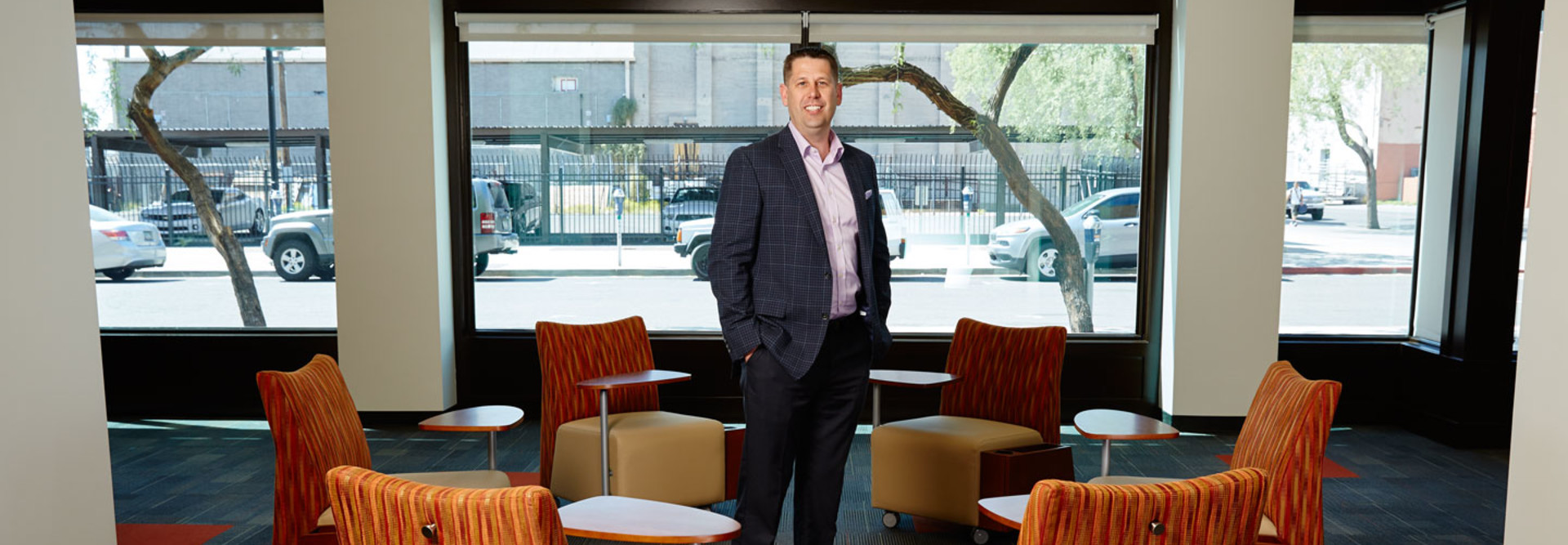Collaboration Technology Fuels Innovation for States and Localities
As CIO of Maricopa County, Ariz., David L. Stevens oversees an IT organization that supports more than 16,000 employees across an area that’s larger than seven U.S. states. It’s no surprise, then, that one of Stevens’ priorities is removing physical boundaries to collaboration among the county’s agencies.
“We’re committed to collaborative, innovative ways of working, from both a technology and a space perspective,” says Stevens. Combining collaborative technologies and open workplaces enables CIOs to create borderless environments that streamline operations. Among the returns: increased productivity, reduced travel costs, improved business processes and quicker response times.
Beyond these benefits, there’s a talent component. Public-sector IT leaders compete with big companies for talent, and collaborative tools and modern workspaces are good levers. In a 2015 Polycom survey, 90 percent of Gen Y respondents cited workplace flexibility as a top priority; 78 percent said access to the collaborative and other rich tools they like to use makes them more productive.
“People are our greatest asset,” Stevens says. “We’re creating an environment conducive to attracting and retaining a culturally diverse team of the best and brightest by providing the tools and workspaces that let them be successful.”
Maine CIO Jim Smith adds, “It’s important we understand and accommodate the ways that different generations get work done as we continually develop our workforce.”
Creating a Collaborative County Culture
As part of a three-year plan, the Maricopa County Office of Enterprise Technology (OET) has been working with Avaya to roll out collaboration technologies. The deployment includes Avaya’s Aura platform, along with Aura Communicator and Scopia products, to provide integrated Voice over IP, video conferencing, instant messaging, interactive whiteboards, data sharing and other collaboration services across 58 departments.
To date, Stevens’ office has deployed roughly 200 wall-mounted telepresence systems throughout the county. With these in place, agency teams can gather in one conference room to collaborate with groups at other facilities, as well as with employees running Avaya software on their desktops and mobile devices.
Given the range of services county governments provide, mobile devices such as smartphones and ruggedized tablets play a key part in Maricopa County’s IT strategy. Productivity skyrockets when workers can remotely access and update back-end databases and communicate with other staff via chosen channels. In 2013, the OET launched a bring-your-own-device program that gives employees choice of device.
Agencies that pair such collaboration tools with modern workspaces see double the benefits. Open designs featuring small offices for quiet time, meeting rooms and comfortably furnished open spaces meet the needs of today’s workers, who want flexibility in where and how they do their jobs.

SOURCE: Data Dimensions, “2016 Connected Enterprise Report,” February 2016
“Space matters,” Stevens says. With that in mind, Maricopa remodeled the historic building that houses the OET team, removing “claustrophobic cubicle silos” to create a fresh space with glass-walled conference rooms, open areas and furniture easily moved for different collaborative setups.
“The change is pretty dramatic, with open spaces where people huddle and collaborative rooms where they brainstorm,” says Stevens. “We’re seeing a spontaneity that wasn’t there before.”
Finding a Dedicated Space for Collaboration
Collaboration forms the cornerstone of the innovative work conducted at the North Carolina Innovation Center, which is run by the state’s Department of Information Technology (DIT). The iCenter both showcases collaborative workspace options and technologies and puts them to work helping the departments the DIT serves.
“When Governor Pat McCrory first envisioned the iCenter, it was primarily about creating a culture of collaboration throughout the state to better serve citizens,” says North Carolina CIO Keith Werner. The agency has been fortunate to work with partners to demo equipment and furniture without burdening taxpayers, he adds.
Determined to run lean, DIT took advantage of existing resources on both the personnel and the facility side. It was able to secure a state-owned building and create a multipurpose workspace, with dedicated rooms and open space. “We’ve designed our whole space to help different organizations with different needs solve their technology problems,” says iCenter Director Eric Ellis.
Among numerous functions, the iCenter provides a place for agencies to work with demonstration partners to test new technologies before investing. It can’t affordably host a lot of demo technology onsite, but what it has serves double duty. In the “Connect” room, for example, a Cisco TelePresence TX9000 Series system enables interested agencies to test its immersive experience, interactive touch screens and extensive collaboration features. Moreover, they can use the system to conduct cost-effective meetings with other agencies and various stakeholders wherever they are. Directors of one agency that uses the system report that business processes that previously cost $150,000 annually have been reduced to less than $30,000.
Then there’s the “Explore” room, which houses mobile devices in multiple form factors. Here, teams can test various models, as well as check them out for field deployments before they make purchase decisions.
Agility Breeds Innovation
The Maine Office of Information Technology (OIT), too, is intent on fostering collaboration, an effort exemplified by its thriving Agile Center of Excellence (CoE) housed in a building adjacent to its headquarters. In addition to web conferencing, instant messaging and other technology, CoE teams use a project management framework that incorporates social collaboration tools.
In the CoE, “we wanted to build a space that allowed for spontaneous collaboration but also had conference rooms where people could hold private meetings,” says Joshua Karstens, director of business process management for the state. In addition to creating scrum rooms for agile teams to gather, OIT has placed some cubicles in the middle of the space and surrounded them with couches and chairs.
Karstens says this open space encourages the kind of impromptu collaboration that state leaders intended. “It starts with a couple of employees talking, and suddenly several people are there discussing ways to proceed with a project.”
Such collaboration drives innovation and efficiencies. “We’re interested in the intersection of technology and open-space design, because together these facilitate human interaction,” says Ellis.









